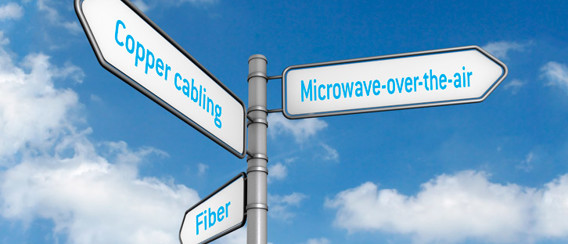Back to Basics: Defining Carrier Ethernet
With demand for premium, high-bandwidth data services such as voice and video reaching unexpected summits, service providers must now expand their IP convergence to the edge/metro network, in a cost-effective, quality-assured manner.
To provide you with a better idea of what service providers need to deal with to maximize their offering while reducing operating costs, I decided to use the EXFO blog to breakdown the technology for you in a series of posts. Therefore, let’s start with the beginning and talk about Carrier Ethernet.
Even though Ethernet has long been accepted as an inexpensive, scalable data-networking solution in LAN environments, service providers need to find solutions to tap into the cost-effectiveness of Ethernet without sacrificing the quality of experience (QoE).
Comprehensive Ethernet testing immediately at service turn-up is now essential to ensure service quality and increase customer satisfaction. As opposed to network availability and mean-time-to-repair (MTTR) values, which can easily be verified thanks to customer service-level agreement (SLAs), Ethernet performance criteria, such as demonstrating performance availability, transmission delay, link burstability and service integrity, are harder to define. Therefore, Carrier Ethernet is the extension of Ethernet that enables service providers to provide premium Ethernet services.
To this day, three transport media can be used in Carrier Ethernet: copper cabling, microwave-over-the-air and fiber networks.
Copper cabling:
+ Vast infrastructure already in place as it was the media of choice to deliver plain old telephony service (POTS) to homes and businesses.
+ Cost-efficient as service providers avoid building out new and costly networks, and leverage the existing infrastructure as they address markets with lower-rate traffic of up to 1 Gbit/s and begin to carry higher-speed traffic (in some cases up to 10 Gbit/s).
– Subject to both electromagnetic interference and cross-talk, which can negatively affect the reliable transfer of digital data
– At high speeds, interference and cross-talk are even worse.
Microwave-over-the-air:
+ Allows Ethernet use for mobile backhaul, the distance from a cell tower to a switching office or between switching offices.
+ Ethernet-enabled microwave is becoming an increasingly important component of a wireless infrastructure.
+ Allows meeting the higher bandwidth demands at the base station sites and the requirement to provide a substantial reduction in operational costs of backhauling the data traffic.
Fiber:
+ Effective in transport of high-speed traffic (usually 1 Gbit/s or more) over long distances or within the network core.
+ Can carry much more information than copper and is used with SONET/SDH, dense wavelength-division multiplexing (DWDM) or optical transport networks (OTNs).
+ Entirely resistant to both cross-talk and electromagnetic interference, therefore provides much more reliable data transmission.
– High cost of deployment and maintenance.
To this day, copper cabling is still one of the most widely used media, which is why there are now solutions to counter data transmission problems. I invite you to read the articles by my colleague Chris Dunford to learn more about bonding and vectoring. The growth of the wireless industry combined with the proliferation of the mobile backhaul will only contribute to increase the use of microwave radio as a transport medium. And as the demand for bandwidth and speed increases, the need to implement fiber on networks, even at the business site, is growing. So overall, all three medium are highly efficient, it just depends on the needs of the service provider.
Stay tuned for more Carrier Ethernet Basics as I will post new content about this topic on a regular basis. If you’d like to get the full story right away, you can always read Chapters One, Two and Three of EXFO’s Carrier Ethernet Basics e-book.



